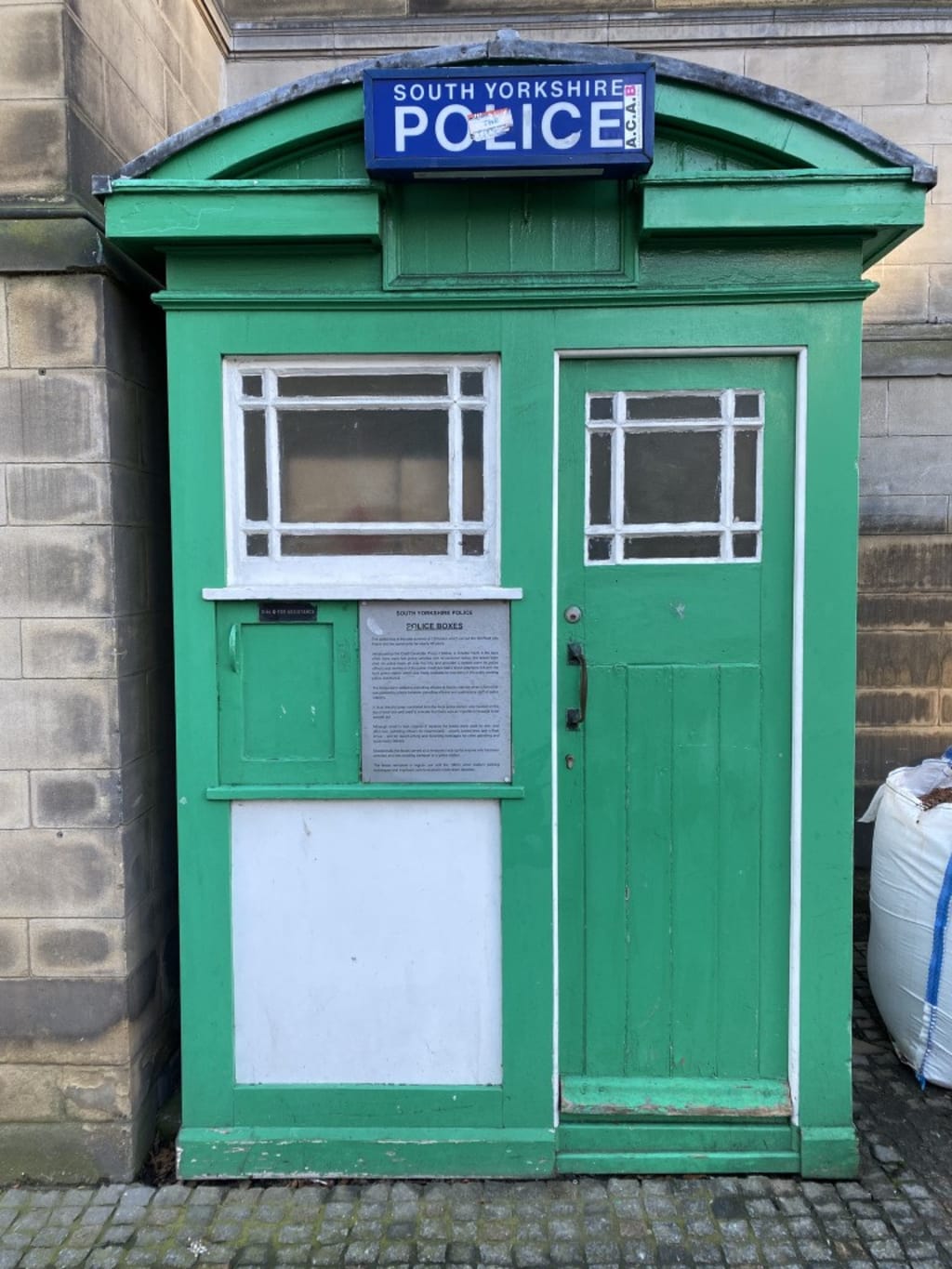Police Communication Boxes
The United Kingdom once had thousands of police communications boxes. Of those, the boxes that remain today are mostly in museums. However, there are a few that remain on the streets, preserved as an insight into how the police communicated before the police radio.

Every day, thousands of pedestrians walk past this green police box on Surrey Street in Sheffield, I am one of them. However, it was not until I started to write a blog, that I decided to take a closer look at the unusual green box.
This turquoise green wooden box is located outside the Sheffield town hall on Surrey Street and is the sole survivor of the 120 police boxes that were once a familiar sight around the city.
The Sheffield box was instigated by Chief Constable Percy J Sillito in around 1929. All the boxes in Sheffield were painted white and green and were used by police officers to fill in reports, take breaks as well as being used as temporary lock-ups to detain suspects whilst they waited for transport.
Police boxes first appeared in Albany, New York in 1877, where five telephones were used as a communication means with the Mayor’s office. The first police boxes in the United Kingdom were installed in Glasgow. The first being the invention of a fireman in 1891. Glasgow went on to have the largest number of boxes totalling 323. Wooden boxes were introduced in Sunderland in 1923 and in Newcastle in 1925. The Metropolitan Police introduced police boxes in London between 1928 and 1937.
The main purpose of the boxes was for the police to take advantage of new communications technology, mainly, the telephone. Earlier police signal boxes used Morse Code rather than a telephone. Police boxes were installed in cities across the United Kingdom to improve the efficiency of the police. Police boxes became a familiar site across cities in the United Kingdom, there were thousands in total.
Boxes decentralised police constables away from the police stations, preventing the necessity to return to base a number of times during their beat. Some police forces allowed officers to report straight to one of the boxes and ‘ring in’ to their station. In addition, the boxes were equipped with first aid boxes, a fire extinguisher, a stool and table for the officer and a small heater.
The main feature of the box, the telephone, was situated so that it could be accessed by the public from the outside, connecting them straight to the police switchboard. This was an important tool as many homes of the time did not have telephones, so to report a crime, they could go to their nearest police box, if closer than the police station itself.
Depending on where you were in the country, some boxes were made of cast iron and some were made from wood. Often boxes would be painted blue, red or green. Inside the box, there would be a signalling line, which was connected to the police station. Boxes often had an electromagnetic lever system that lit a red lamp on the roof. However, some boxes had a lamp remote to the box in a better position of visibility.
The boxes became redundant in the 1960s to early 1970s, as communications had improved and the use of police cars and personal police radios increased. Decommissioning of the boxes began in 1969 and the boxes were either removed or demolished where they stood.
In popular culture, the Tardis in the TV series Doctor Who was specifically designed to resemble a police box. Other than the Sheffield box, some other boxes can still be seen dotted around the United Kingdom. There are several in Glasgow and a replica box can be seen outside Earl’s Court tube station in London. The box was built in 1996 and based on the 1929 Gilbert Mackenzie Trench design. There is also a red box inside the Glasgow Museum of Transport and a 1929 Mackenzie Trench design police box at the National Tramway Museum in Crich, Derbyshire.
Sources:
https://www.oldpolicecellsmuseum.org.uk/content/history/police_history/brief-history-police-box
https://www.britishtelephones.com/police/boxes.pdf
About the Creator
Armchair Detective
Amateur writer, I mostly write about true crime.






Comments
Armchair Detective is not accepting comments at the moment
Want to show your support? Send them a one-off tip.